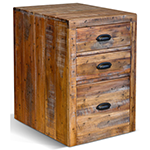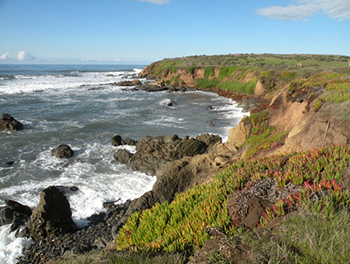Luke 17:11-19 - Healing and Thanksgiving
11On the way to Jerusalem Jesus was going through the region between Samaria and Galilee. 12As he entered a village, ten lepers approached him. Keeping their distance, 13they called out, saying, “Jesus, Master, have mercy on us!” 14When he saw them, he said to them, “Go and show yourselves to the priests.” And as they went, they were made clean. 15Then one of them, when he saw that he was healed, turned back, praising God with a loud voice. 16He prostrated himself at Jesus’ feet and thanked him. And he was a Samaritan. 17Then Jesus asked, “Were not ten made clean? But the other nine, where are they? 18Was none of them found to return and give praise to God except this foreigner?” 19Then he said to him, “Get up and go on your way; your faith has made you well.”
Background: Leprosy in the Bible referred to any of a number of skin disorders, ranging from fairly mild to horribly debilitating. The most common form of ‘leprosy’ in the Old Testament was called ‘white leprosy’. It typically began with a small swelling that gave rise to a scab and then a bright or white spot that could cover large portions or even the whole body.
Leprosy as a Sign of Sin: In the ancient world, the people of God believed that all calamities were a result of sin. If a person became sick, it was a punishment for sin. If a person died prematurely, it was a punishment for either the sin of the person or the sin of the family. Leprosy, prior to Jesus’ day, was seen in this light. This was especially true for spreading forms of the disease. Because it was seen as a sign of sin, lepers were considered unclean and therefore unfit for community and for worship. The social stigma was enormous! In Lev. 13:45-46, the law requires that those with leprosy go about with torn clothes, disheveled hair and with their hands raised above their upper lips, crying, “Unclean! Unclean!”. They were required to live alone on the outskirts of town, could not worship with the community, therefore without access to the sacrificial system that was the means for dealing with sin. It was even believed that there sin was so deep and profound that it had the spiritual power to contaminate anyone who touched them.
The Samaritan problem: Samaria was a beautiful and fertile land north of Jerusalem in what came to be known as the Northern Kingdom of Israel (as opposed to the Southern Kingdom of Judah). At one time Samaria (the land and the city) was occupied by the ten tribes of Israel. The two tribes of Judah occupied the south. When the Assyrians conquered the Northern Kingdom in 722, those Jews that were not deported or killed intermarried with their captors. The Jews of the south saw this as the most flagrant unfaithfulness. Things got worse after the southern kingdom fell to Babylon and most of the conquered Jewish people were deported. When they were allowed to return, the people of Jewish descent in Samaria claimed that they were the only true remnant of the chosen people. The Samaritans differed with the Jews on a number of theological points. One principle disagreement centered on the place for appropriate worship. The Jews said that worship must take place in Jerusalem at the Temple. The Samaritans believed that worship should take place on Mt. Gerizim, not Mt. Zion. They refused to worship at the rebuilt temple in Jerusalem. Further, the Samaritans did not believe that Messiah would be a Davidic king who would come to initiate the final age. They talked of Messiah as “the Restorer” who would restore people to right worship as in the time of Moses. The Samaritans held tightly to the first five books of the Old Testament (the Pentateuch) as the only Holy Scripture. They did not acknowledge the prophets in the same way as the Jews. In short, Jews considered Samaritans unclean and worse than animals. They had nothing to do with each other, never spoke in public and would never dream of sharing utensils such as bucket or dippers for water.
Word Study
Vs 11 – on the way – Luke is reminding the readers of Jesus’ primary goal…to get to Jerusalem.
The region between Samaria and Galilee – geographically this makes little sense. Some argue that it was an expression intended to make it reasonable that Jesus would encounter a Samaritan. I see it metaphorically as well as geographically. Jesus is traveling in the border places between faith and faithlessness, a place that most of us know how to travel as well.
Vs. 12 – ten lepers – literally: ten men who had leprosy. This is a subtle distinction but an important one. He does not see them as defined by their disease. They are people first who happen to be dealing with a grave challenge.
Keeping their distance – see introduction
Vs. 13 – called out – literally raised their voices in unison.
Master – a special word used only in Luke and, with this exception, always on the lips of the disciples.
Have mercy – a plea for direct help, often for alms.
Vs. 14 – When he saw them – this was more than the work of the eyes. The word implies seeing the totality of their condition and having insight into it.
Go and show yourselves – this is to meet the requirements of the law.
Vs. 15 – when he saw – the same insight that Jesus had earlier
Praising God – the natural response to enlightenment.
Vs. 16 – prostrated – fell on his face
Samaritan – see above
Questions for Reflection
1. In what areas of your life do you feel like you are on the border between faith and lack of faith? When Jesus looks at you what does he see? If you need help ask him for it.
2. How have you experienced God’s mercy? Are their things for which you need to glorify God and thank Jesus today?



